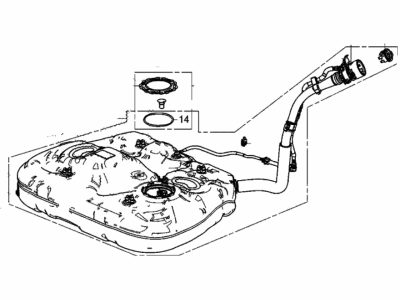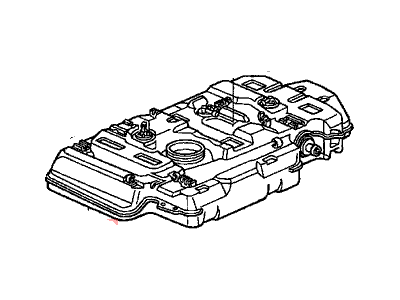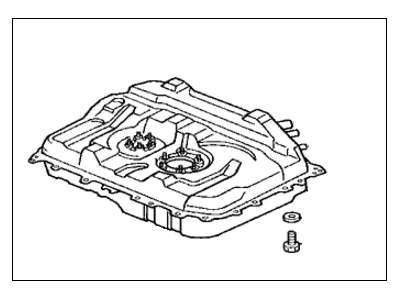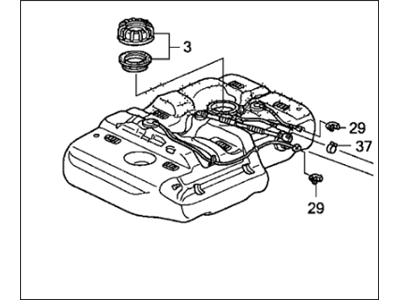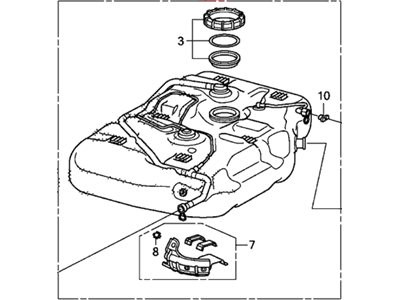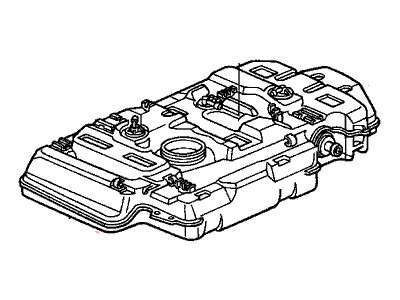×
- Hello
- Login or Register
- Quick Links
- Live Chat
- Track Order
- Parts Availability
- RMA
- Help Center
- Contact Us
- Shop for
- Honda Parts
- Honda Accessories

My Garage
My Account
Cart
Genuine Honda Odyssey Fuel Tank
Gas Tank- Select Vehicle by Model
- Select Vehicle by VIN
Select Vehicle by Model
orMake
Model
Year
Select Vehicle by VIN
For the most accurate results, select vehicle by your VIN (Vehicle Identification Number).
7 Fuel Tanks found
Honda Odyssey TANK SET, FUEL
Part Number: 17044-THR-A05$885.78 MSRP: $1278.18You Save: $392.40 (31%)Honda Odyssey Tank Set, Fuel
Part Number: 17044-SHJ-A31$2437.20 MSRP: $3516.88You Save: $1079.68 (31%)
Honda Odyssey Fuel Tank
The Fuel Tank of the Honda Odyssey vehicles is the depot for fuel; besides containing the electric fuel pump and the fuel gauge sender. It has baffles to minimize fuel movement, is an element of the Evaporative Emission Control System, and can be Metallic or Plastic. Metal tanks are rolling formed and then welded and plastic tanks are blow-molded. It is possible to have corrosion on the fuel tank and impacts in addition to changes in the temperature level. Fuel cells in racing cars are made to allow car racers not to be permeated or gush out gas during accidents. This military grade polymer fuel tanks with high capacity can add up to 500 miles to the car's driving range as they do not corrode like steel fuel tanks.
In search of affordable OEM Honda Odyssey Fuel Tank? Consider browsing through our extensive inventory of genuine Honda Odyssey Fuel Tank. Not only do we provide market-leading prices and a manufacturer's warranty, but we also pride ourselves on exceptional customer service and swift delivery.
Honda Odyssey Fuel Tank Parts Questions & Experts Answers
- Q: How Should Fuel Tanks Be Handled After Removal on Honda Odyssey?A:Fuel tanks are not repairable. Cleaning should be done by a professional. If removed, the tank should not be placed near sparks or open flames, as fumes could ignite and cause an explosion.
- Q: How Do I Remove and Replace a Fuel Tank on Honda Odyssey?A:The following procedure is much easier to perform if the fuel tank is empty. The tank has no drain plug, so the fuel must be siphoned from the tank with a siphoning kit, which is available at most auto parts stores. NEVER try to start the siphoning action with your mouth! Remove the fuel tank filler cap to relieve fuel tank pressure. Relieve the fuel system pressure, then disconnect the cable from the negative battery terminal. Raise the vehicle and place it securely on jackstands. If the fuel tank is empty or nearly empty, it's not necessary to siphon the remaining fuel from the tank. But if there is a lot of fuel in the tank, drain the fuel by removing the Fuel Pump/fuel level sending unit and siphoning it out through the opening in the tip of the tank. Disconnect the four-pin electrical connector, which is located right in front of the tank, just below the fuel supply and return line connections. This is the connector for the fuel pump/fuel level sending unit module. Disconnect the fuel supply and return line connections and cover the ends of the line fittings with plastic bags to prevent dirt and moisture from contaminating the fuel system. Also, loosen the hose clamp and disconnect the EVAP hose that's located next to the supply and return lines. Disconnect the fuel filler neck hose and the three EVAP hoses. Support the fuel tank with a transmission jack. If you don't have a transmission jack, use a floor jack. If you're going to use a floor jack, put a piece of plywood between the jack head and the fuel tank to protect the tank. Unbolt the fuel tank retaining straps and remove them. Carefully lower the fuel tank. If you need to remove the fuel pump/fuel level sending unit module, but haven't yet done so, do it now. If you're going to have the fuel tank cleaned, proceed with that process. Installation is the reverse of removal. Be sure to tighten the fuel tank strap bolts. When you're done, reconnect the cable to the negative battery terminal, then start the engine and check for fuel leaks.
Related Honda Odyssey Parts
Browse by Year
2024 Fuel Tank 2023 Fuel Tank 2022 Fuel Tank 2021 Fuel Tank 2020 Fuel Tank 2019 Fuel Tank 2018 Fuel Tank 2017 Fuel Tank 2016 Fuel Tank 2015 Fuel Tank 2014 Fuel Tank 2013 Fuel Tank 2012 Fuel Tank 2011 Fuel Tank 2010 Fuel Tank 2009 Fuel Tank 2008 Fuel Tank 2007 Fuel Tank 2006 Fuel Tank 2005 Fuel Tank 2004 Fuel Tank 2003 Fuel Tank 2002 Fuel Tank 2001 Fuel Tank 2000 Fuel Tank 1999 Fuel Tank 1998 Fuel Tank 1997 Fuel Tank 1996 Fuel Tank 1995 Fuel Tank
